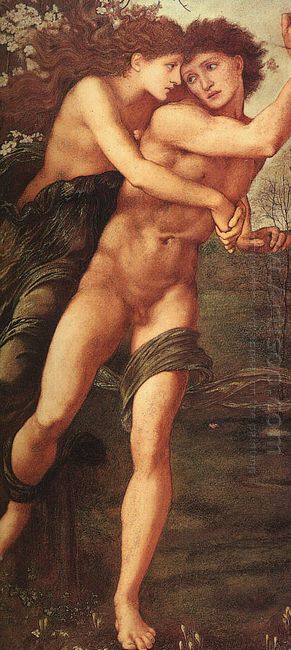In 1870, Bourne Jones painted Phyllis and Demophon in watercolor form and ten years later he showed the same content in the painting. The latter form strengthened the sense of passion. This work was based on the ancient poet Rome Ovid Metamorphosis. In the Greek mythology, the Thracian king’s daughter Phyllis and Athens’s Prince Demophon fell in love with each other. They decided to get married, but their parents were strongly against it. Then Phyllis and Demophon agreed to escape together. Later Demophon did not keep the appointment because of his fear. Thus Phyllis was too desperate to hang herself and her body turned into a strain of almond tree. Demophon was very remorseful and as his physical condition got worse, he came to the place where they once prearranged to meet each other and cried so hard. However, the almond tree was in blossom magically. At that time, Demophon eased his sorrow. Then he often came there. If he hug the tree, the tree would blossom.
Bourne Jones made such performance in this painting: Demophon came to the scheduled place and hugged the tree to cry. At that time, Phyllis soiled out from the tree and gave a hug to comfort Demophon. Another way of saying was Demophon did not go there. Therefore he was so condemned and his face became haggard gradually. He always went there to tell the pain around the almond tree. One day the almond tree blossom. The painter combined the story’s details and depicted Phyllis into the image that got out from the wood to hug Demophon, but Demophon dodged away in panic. This painting was painted in the watercolors and oil paints. And this had the thicker erotic flavor.
